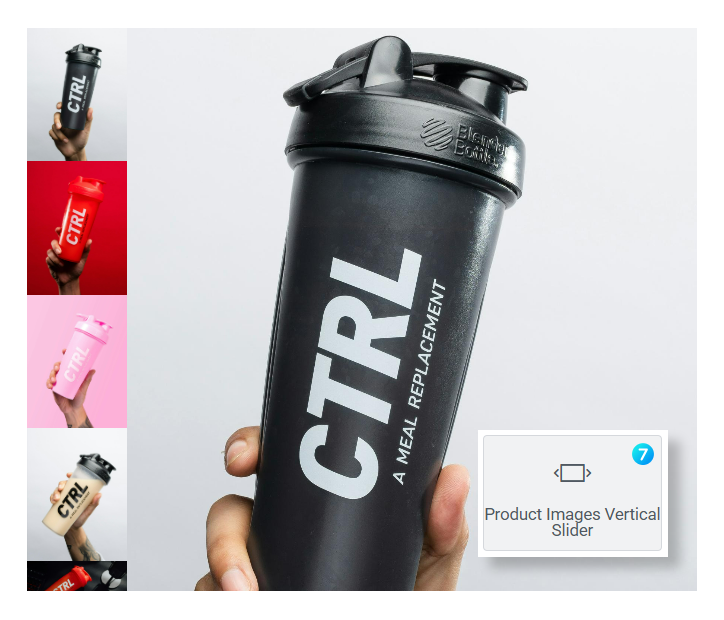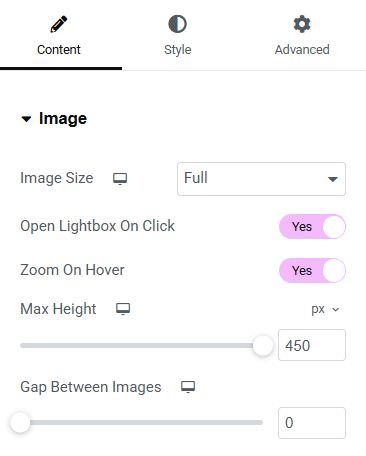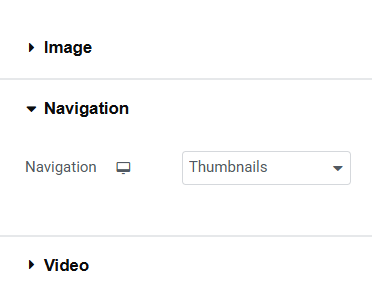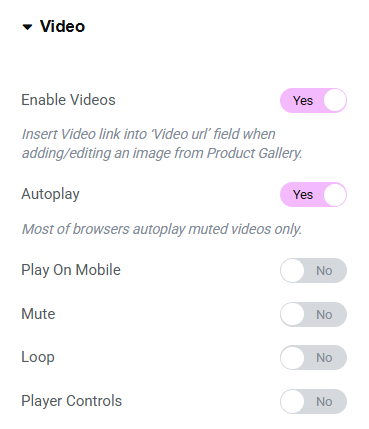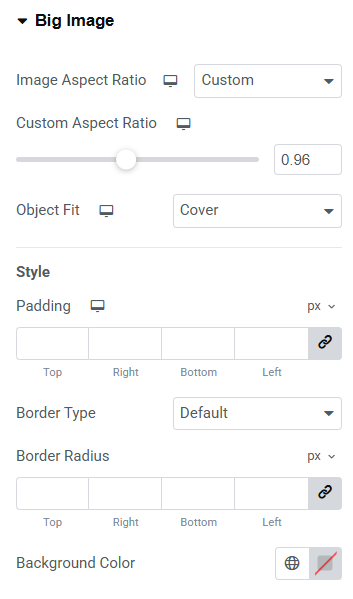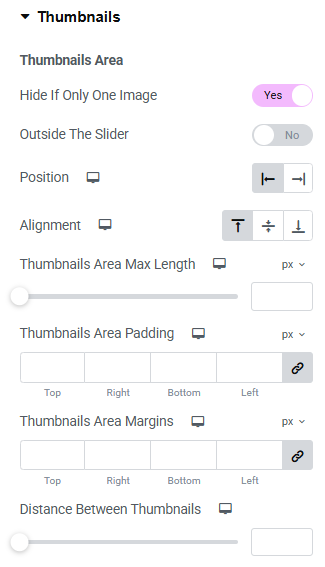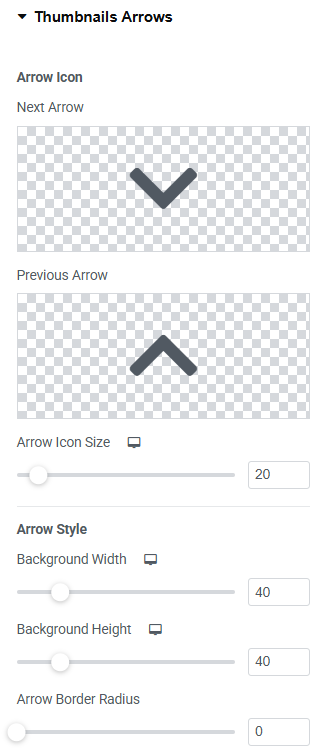The “Product Images Vertical Slider” widget (fig. 1) for WooCommerce enables seamless display of multiple product images in a vertically aligned slider, enhancing product page aesthetics and user interaction.
Content
Image tab (fig. 2.1) contains settings for slider pictures.
Here you can control:
- image size (allows user to pick the size of the source image: full, large, medium, small. It allows user to pick a smaller source image, if in general the element is smaller, so it will have a good impact on performance);
- opening lightbox on click;
- zoom-in image on hoverж
- max image height;
- gap between slider images.
Available Navigation options (fig. 2.2) are:
- thumbnails;
- bullets;
- or disabled.
In the widget Video settings (fig. 2.3), you can:
- decide whether the video should be displayed at all;
- enable autoplay. Please note, most of browsers will autoplay muted videos only;
- mute video sound;
- enable loop re-play;
- hide or show video controls.
Style
Big image tab (fig. 3.1) allows to configure the appearance of the main picture:
- aspect ratio;
- object fit;
- padding;
- border type and radius;
- background color.
Control the appearance of Bullets (fig. 3.2) in the appropriate tab:
- size of bullets and borders;
- gap between bullet items;
- normal/hover/active colors;
- position and margins.
Thumbnails tab (fig. 3.3.1) gives an ability to:
- hide thumbnails if there is only one image uploaded for the product;
- push them outside the slider;
- configure position, paddings and margins;
- specify max length of thumbnails area;
- apply distance between thumbnails.
You also can configure appearance of a single thumbnail (fig. 3.3.2):
- image ratio and width;
- padding;
- border type, width and radius;
- normal/hover/active colors of background, border and opacity.
Thumbnails Arrows tab (fig. 3.4) has the following setting:
- icons and their size;
- background width and height;
- border radius and width;
- normal/hover colors of icon, border and background;
- position and offset.
If video functionality is enabled in the Content tab, you can style “play” Image Video Icon (fig. 3.5):
It allows to configure:
- select the appropriate icon and its size;
- background width and height;
- border type, width and radius;
- colors of icon, border, background;
- box shadow.
Thumbnails Video Icon (fig. 3.6) has the same settings as Image Video Icon.
Advanced
Advanced section contains standard Elementor settings. More info is available here.
